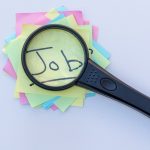|
Getting your Trinity Audio player ready...
|
Universal Design for Learning (UDL) is an inclusivity-focused approach to education. The main goal of UDL is to give all students equal chances of success by removing barriers to learning by focusing on strengths and needs. The first part of UDL, Universal Design, is evident in many aspects of our lives. For example, closed captioning on videos was initially meant for the deaf or hard-of-hearing; however, many people benefit from closed captioning. UDL is also applicable in career education. By focusing on best practices, working to actively remove barriers and including diverse perspectives, educators can help each student discover their individual strengths and interests.
This article is part of a CareerWise series on “Teen Career Decision Making.” Watch for more on CareerWise in the days to come, or subscribe to our CareerWise Weekly newsletter to receive the special themed issue.
Applying universal design as a pathway to inclusive career education (Careering magazine) [Article]
“Universal design for career education is designing career development experiences to meet the needs of all learners,” writes Tricia Berry (Government of New Brunswick). Berry outlines how – using a UDL Guidelines tool – the New Brunswick Department of Education and Early Childhood Development (EECD)’s Future Ready Learning K-12 strategy was designed and is being delivered using multiple means of engagement, expression and representation.
Berry presented a webinar on the same topic with EduSkills OECD in 2021.
A Comprehensive Guide to Applying Universal Design for Learning (BCCampus) [Government Report]
Published by BCCampus and funded by the Ministry of Post-Secondary Education and Future Skills, this extensive document covers many of the essential topics in UDL, including career development. There are two case studies in the document, to help educators think about how they would implement UDL in different scenarios.
Dialogues on Universal Design for Learning: Finding Common Ground and Key Recommendations from the Sector (HEQCO) [Report]
The Higher Education Quality Council of Ontario, a provincial agency funded by the Ontario Ministry of Colleges and Universities, released a report in April 2023 with strategies on how educators at both the K-12 and post-secondary levels can implement UDL. The downloadable report covers a wide array of topics including literature reviews and recommendations.
Implementing UDL in Your School & District (CAST) [Webinar]
Recorded earlier this year, this is an informative webinar for educators on how to implement UDL. The webinar comes with an accompanying digital handout.
On its website, CAST also outlines its projects geared toward the integration of UDL into workforce and career education.
Mental Health and UDL [Article]
The benefits of UDL are widespread and include helping students with mental health difficulties. By using UDL, teachers, educators and counsellors ensure all students have equal chances of success.
Mental Health Matters: How UDL practices benefit students with mental health difficulties [Video]
Dr. Esther Murphy, a Research Fellow at Trinity College Dublin, is featured in this informative presentation by AHEAD – the Association for Higher Education Access and Disability, an independent non-profit organization working to create inclusive environments in education.
Universal Design for Learning Policies (AODA)
In order to meet the needs of all students including those with varying disabilities, educators need to implement policies that adhere to the principles of UDL – for example, choosing an online learning platform that supports assistive technologies. The Accessibility for Ontarians with Disabilities Act has further readings on this topic focusing on each UDL principle: Multiple Means of Action or Expression, Multiple Means of Engagement and Multiple Means of Representation.
Universal Design for Learning: Theory and Practice [Book]
The idea of UDL was first introduced in the 1990s by Anne Meyer and David Rose, who cofounded CAST, a non-profit education research and development organization. Together with their colleagues at CAST, they published the book Universal Design for Learning: Theory and Practice. Teachers can access the book for no cost by making an account on Clusive. The book is also available for purchase on various platforms. A 40th-anniversary edition will become available in 2024.
Universal Design for Learning (UDL): What You Need to Know (Reading Rockets) [Article]
UDL follows three main principles: representation, action and expression, and engagement. In essence, teachers present information in varying ways while also giving students the opportunity to engage with the learning in ways that best suit their strengths. The last principle, engagement, encourages educators to find different ways of motivating their students by giving them choice.
7 Things You Should Know About Universal Design for Learning (Educause Learning Initiative) [Article]
Although focusing on higher education, the information in this article can be applied at the primary and secondary level. The results from the scenario show the positive impacts UDL has on students.
Additional reading/viewing:
- 4 Principles of a Universal Design for Learning Approach (Edutopia)
- 7 Universal Design for Learning Examples and Strategies for the Classroom (Texthelp)
- CAST has its own publishing house and offers many books which cover several topics within UDL, with the full list found here
- Embracing Inclusivity: The Power of Universal Design for Learning (Lexia Voyager Sopris)
- Universal Design for Learning (UDL): A teacher’s guide (Understood)
- Intersectionality, UDL, and Communities of Belonging in Higher Ed (CAST)







